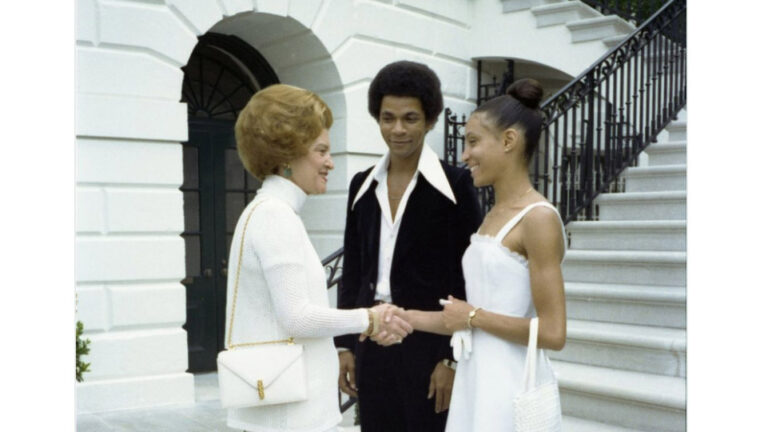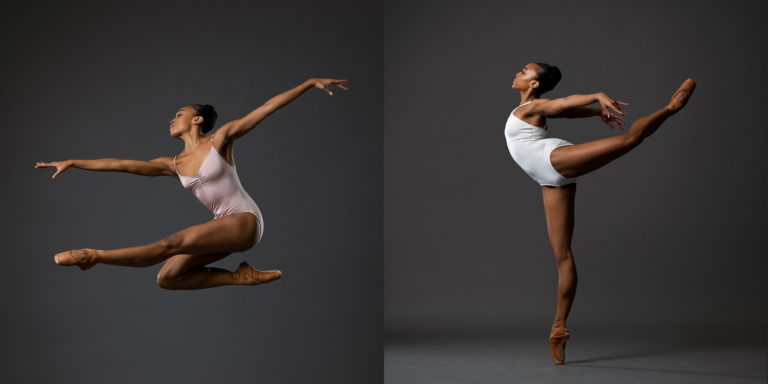
Katherine Dunham (1909–2006) brought African dance aesthetics to the United States, forever influencing modern and jazz dance. She was instrumental in getting respect for Black dancers on the concert dance stage and directed the first self-supported Black dance company.
Dunham was born in Illinois, where she developed an interest in dance during high school. At the encouragement of her brother, she moved to Chicago in 1928, where she began studying anthropology at the University of Chicago. Dunham founded her own company, Ballet Nègre, in 1931 as an alternative to the minstrel stereotype that was the predominant role available for African-American performers at the time. Though it soon folded, she was undeterred: Two years later, she created the Negro Dance Group with Ludmilla Speranzeva, her former ballet teacher.
In 1935, she was granted funding to travel to the Caribbean and conduct anthropological fieldwork in dance. She spent 10 months in Jamaica, Martinique, Trinidad and Haiti, where she was initiated into the Haitian religion Vodou.
Upon her return to the U.S. in 1936, she re-formed her company, her choreography newly infused with the polyrhythmic and pulsating movements of the Caribbean. Dunham and her company performed in several Broadway revues, touted by critics as performers of a new dance genre, Negro dance. On tour, the company encountered significant racial prejudice—hotels refused rooms for her dancers, and presenters segregated audiences. Dunham became an activist, threatening to sue for discrimination and to withhold future engagements until circumstances had changed for the better. In 1951, she premiered her racially controversial piece Southland, despite warnings not to from the State Department, and was consequently refused funding for later touring.
In 1945, she opened the Katherine Dunham School of Dance in New York City. Her student body and faculty were both interracial and international; Dunham intended her school to be a model for racial equality.
Her company disbanded permanently in 1964, after sweeping success abroad and far less acceptance of her progressive work in her own country. A talented writer, Dunham published several books in her lifetime, including Island Possessed, which detailed her time in Haiti, and her memoir A Touch of Innocence.

Style
- Dunham Technique blends polyrhythmic Afro-Caribbean movement, modern and ballet, with a focus on strengthening the core and creating a versatile torso. Isolations of the head, shoulders, torso and hips occur frequently, as do back undulations and contractions.
- Form and function are closely related in this technique. Isolations of the pelvis, for example, can be overtly sexual, not unlike twerking, which has its origins in West African dance. Dunham’s movement style was controversial in her time and often censored.
Fun Facts
- At the age of 82, Dunham went on a hunger strike in protest of the U.S. government’s treatment of Haitian refugees.
- Martha Graham once referred to Dunham as the “high priestess of the pelvic girdle.”
- Dunham’s company toured 57 countries between 1943 and 1965, enjoying wild success in Europe, Latin America, Asia and Australia.
The Work
- L’Ag’Ya (1938) This piece was Dunham’s interpretation of the ag’ya, a Martinique fighting dance. During its creation, she met designer John Pratt, who would become both her longtime artistic collaborator and her second husband.
- Cabin in the Sky (1940) George Balanchine, who choreographed this Broadway musical, asked Dunham to play the seductress Georgia Brown. She ended up contributing choreography.
- Southland (1951) In this piece, a young Black man is falsely accused of raping a white woman and eventually lynched. This racially charged ballet was immediately suppressed after its premiere and is rarely revived.
The Legacy Lives On
The Dunham Technique is taught in university dance programs and master classes throughout the U.S., Haiti, Cuba and France. Former students of Dunham include the actor James Dean, Dance Theatre of Harlem co-founder Arthur Mitchell and philanthropist Doris Duke. Dancers Talley Beatty, Julie Robinson Belafonte and Eartha Kitt were all members of her company.
More resources for your students:
Print:
- “A Lost Protest: Reviving Katherine Dunham’s Controversial Southland,” by Donna Bryson, Dance Magazine, December 2012
- Kaiso! Writings by and about Katherine Dunham, edited by V V A. Clark and Sara E. Johnson, The University of Wisconsin Press, 2005
Online:
- Dance Heritage Coalition: “America’s Irreplaceable Dance Treasures”
- Katherine Dunham Performing Ballet Creole (1952), British Pathé Youtube





